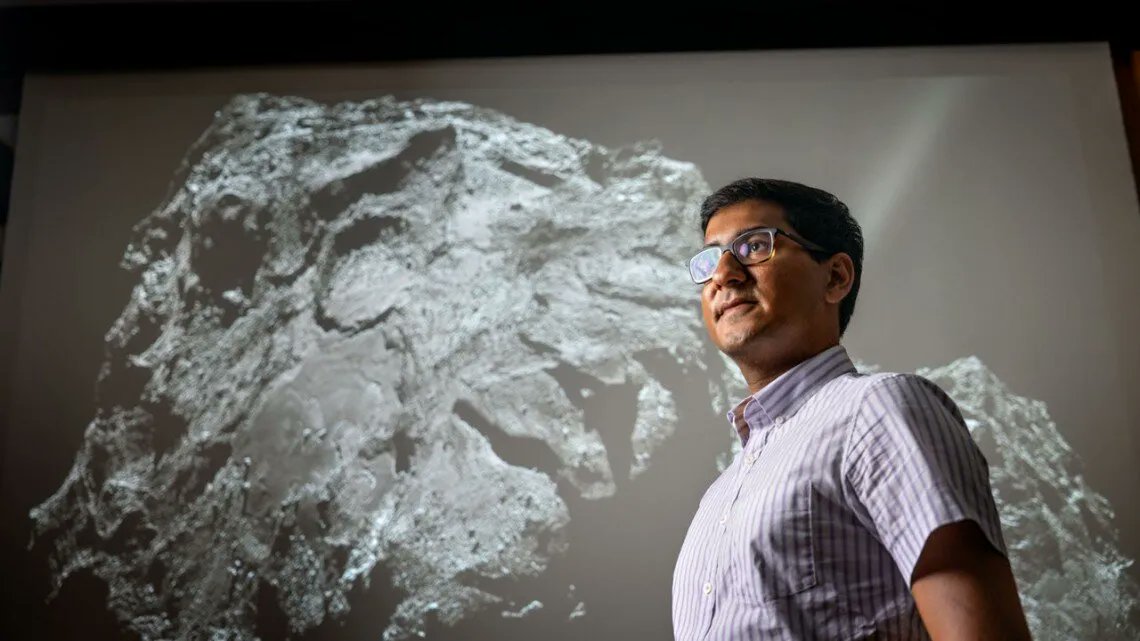Sometimes, space probes that have long since ceased sending back data can still usher in new discoveries. That was the case recently when scientists used data from Rosetta, a probe that eventually crashed into comet 67P/Churyumov-Gerasimenko in 2016, to understand what changes occur on a comet's surface as it continues its spin around the Sun.
Published in the August 26 edition of The Planetary Science Journal, the paper from researchers at Cornell was inspired by the need to find a safe landing area for a future potential sample return mission. The idea wasn't just to find a specific place on 67P/Churyumov-Gerasimenko but to better understand how the geological processes of a comet's orbit around the Sun affect its surface.
There was plenty of data to look at. Rosetta spent over two years orbiting the comet and even sent a lander, Philae, down to it. It circled 67P/Churyumov-Gerasimenko while the comet reached its perihelion - the part of its orbit nearest the Sun and the one most active periods of its orbit geologically.
UT discusses the Rosetta mission.The increased temperatures on the comet's surface in late 2015 caused significant shifts in 16 different flat regions on the surface that Rosetta was watching. Sublimation is the process by which the ice that usually blankets the comet's body is changed directly into a gas by the heat from the Sun. The changes to the region also included the erosion of some of the edges of the depressions on the surface and other material settling back down onto it.
Changes like this would make it difficult for any landing craft to find a stable site using remote sensing methodologies. Philae itself ran into trouble when it bounced off the comet's surface and ended up in a strange orientation that made the rest of its mission difficult. Such are the hazards of landing on a body where the gravity is 1/10000 what it is on Earth.
Even those challenges aren't enough to stop scientists from exploring them, though. Many believe that comets are what seeded Earth with the necessary chemicals for life, including water. They were formed during the solar system's birth and haven't changed much since then, so they provide a unique look into how the solar system was before the formation of planets.
UT discussion of why it's hard to land on a comet.67P/Churyumov-Gerasimenko might even expect another visitor, as it is one of the most easily accessed comets. Its orbital period of 6.45 years means it runs the full gamut of environments that comets experience in a relatively short time. And it is already one of the best observed, with both Philae and Rosetta sending back hundreds of pictures of it.
Whether or not we ever return to it is still up in the air, but we will undoubtedly be back to visit more comets. A better understanding of how their surfaces form and what that means for landing on them will undoubtedly prove useful in the long run.
Learn More:
Blaine Friedlander / Cornell - Scientists show how terrain evolves on an icy comet
Jindal et al - Topographically Influenced Evolution of Large-scale Changes in Comet 67P/Churyumov–Gerasimenko's Imhotep Region
UT - Rosetta Team Finds New, Final Image Hiding in the Data
UT - Rosetta Saw Collapsing Cliffs and Other Changes on 67P During its Mission
UT - I Can’t Stop Watching This Amazing Animation from Comet 67P
Lead Image:
Lead author Abhinav Jindal stands in front of a picture of Comet 67P taken by Rosetta.
Credit - Jason Koski / Cornell University
 Universe Today
Universe Today
